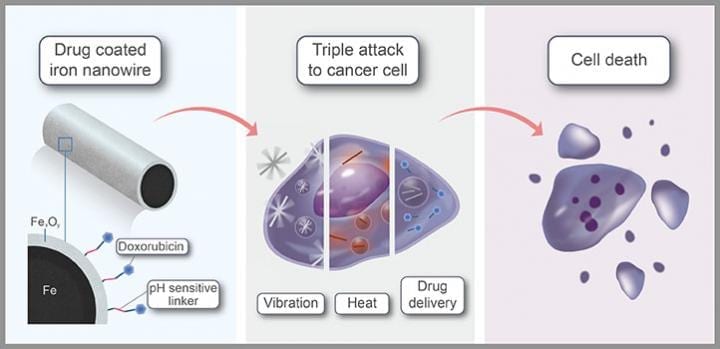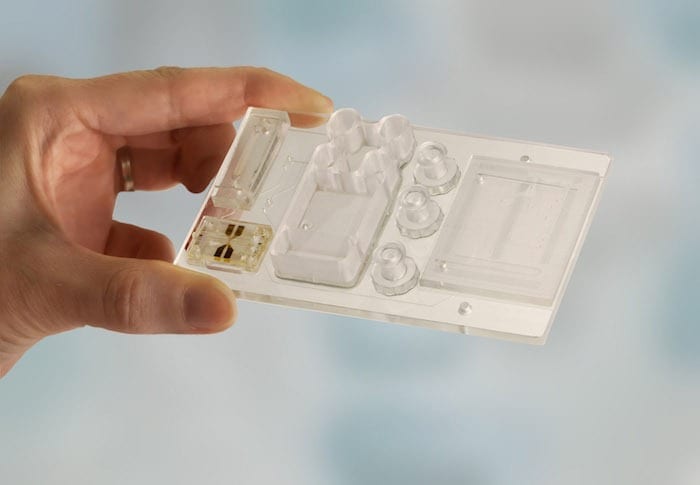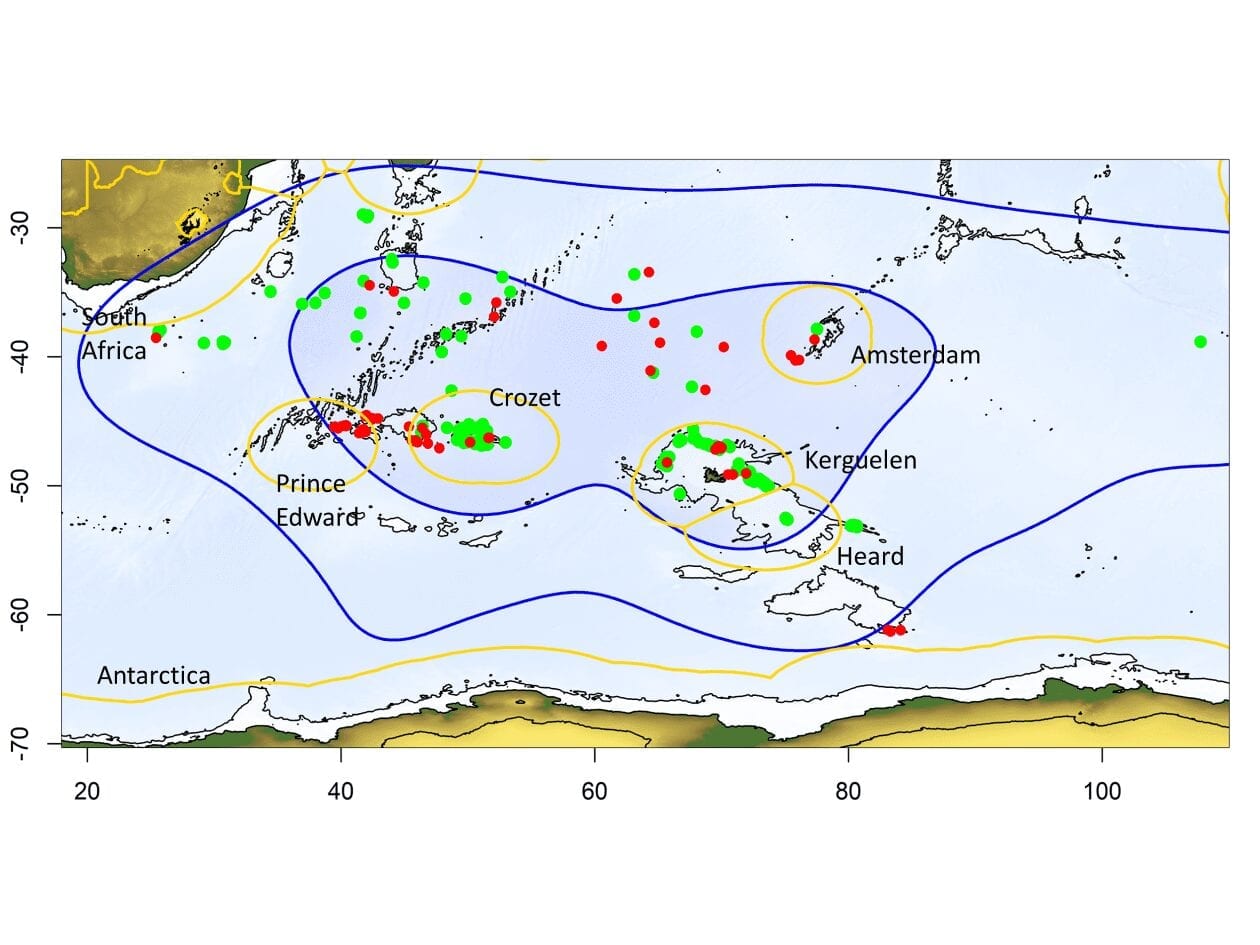
By combining low-power magnetic fields, which agitate nanowires, with laser heating and drug delivery, target cells can be killed efficiently.
2020 KAUST
Multifunctional iron nanowires selectively obliterate cancer cells with a triple-punch combination attack.
Drug-coated iron nanowires that can be guided to the site of a tumor using an external magnetic field before activating a three-step cancer-killing mechanism could provide an effective option for cancer therapy.
Co-developed by KAUST researchers, these nanowires release their drug cargo inside cancer cells, while also punching holes in the cell’s membrane and delivering a blast of heat. While the combination therapy maximizes cancer cell death, its highly targeted nature should minimize side effects.
Iron was the obvious material to make the nanowires, says Jürgen Kosel, who leads the group at KAUST, which includes Jasmeen Merzaban and Boon Ooi, and who co-led the work with researchers from CIC biomaGUNE in San Sebastian, Spain.
The first consideration is safety. “Iron, in molecular form, is a native material in our bodies, essential for oxygen transport,” Kosel explains. The nanowires comprise an iron core, coated with an iron oxide shell. “Iron-oxide-based nanomaterials have been approved by regulatory bodies for use in magnetic resonance imaging and as a dietary supplement in cases of nutrition deficiency,” he says.
In addition to their biocompatibility, the magnetic properties of iron-based materials are a key benefit. “Using harmless magnetic fields, we can transport them; concentrate them in the desired area; rotate or make them vibrate, such as we did in this study; and even detect them through magnetic resonance imaging,” says Aldo Marti?nez-Banderas, a member of Kosel’s team. Applying low-power magnetic fields, the team agitated the nanowires in a way that opened the membrane of target cells, inducing cell death.
The additional advantage is that core-shell nanowires strongly absorb near-infrared light, heating up as they do so. Because light at this wavelength can penetrate far into the body, the nanowires could be heated using lasers directed at the tumor site. “The core?shell nanowires showed an extremely high photothermal conversion efficiency of more than 80 percent, which translated into a large intracellular heat dose,” Marti?nez-Banderas says.
Finally, the anticancer drug doxorubicin was attached to the nanowires via pH-sensitive linkers. As the tumor environment is typically more acidic than healthy tissue, the linker selectively degraded in or near tumor cells, releasing the drug where it is needed. “The combination of treatment resulted in nearly complete cancer cell ablation and was more effective than individual treatments or the anticancer drug alone,” Marti?nez-Banderas says.
“Taken together, the capabilities of iron-based nanomaterials make them very promising for the creation of biomedical nanorobots, which could revolutionize healthcare,” Kosel adds. “While this might seem futuristic, the developments are well on their way.”
The Latest Updates from Bing News & Google News
Go deeper with Bing News on:
Iron nanowires
- Scientists make electricity from air moisture using bacterial nanowires
Bacterial nanowires can conduct electricity and can potentially be used to devise sensing systems. However, after being harvested from bacteria, these nanowires are hard to modify and, therefore, have ...
- Discovery of Bacteria ‘Nanowires’ Offers Potential for Green Electronics Development
Filaments engineered by scientists at UNSW Sydney were shown to produce electricity from moisture in the air.Engineered protein filaments originally produced by bacteria have been modified by ...
- The best cast iron skillets 2024: Tested and rated
Treated well, the best cast iron skillets will last a lifetime. And even if they go a little rusty in places, knowing how to clean a cast iron skillet will bring it back from the brink every time.
- Bacteria 'nanowires' could help develop green electronics
Engineered protein filaments originally produced by bacteria have been modified by scientists to conduct electricity. In a study published recently in the journal Small, researchers revealed that ...
- Top 6 Best Iron Supplements After Gastric Bypass Surgery in 2024
Following gastric bypass surgery, there is a significant decrease in the body’s capacity to absorb nutrients, including iron. A lack of iron is a frequent issue encountered by many patients post ...
Go deeper with Google Headlines on:
Iron nanowires
[google_news title=”” keyword=”iron nanowires” num_posts=”5″ blurb_length=”0″ show_thumb=”left”]
Go deeper with Bing News on:
Biomedical nanorobots
- Biomedical Engineer Salary
How Much Does a Biomedical Engineer Make? Biomedical Engineers made a median salary of $99,550 in 2022. The best-paid 25% made $129,230 that year, while the lowest-paid 25% made $78,500.
- Biomedical technology news
A research team led by Professor Sohee Kim of the Department of Robotics and Mechatronics Engineering in the Daegu Gyeongbuk Institute of Science & Technology has successfully developed three ...
- Biomedical technology news
The Korea Institute of Industrial Technology (KITECH) has introduced a new solution in the form of a transparent mask, addressing concerns surrounding microplastic pollution and harmful solvents ...
- What Made White Falcon Hold Lifecore Biomedical (LFCR)?
White Falcon Capital Management featured stocks like Lifecore Biomedical, Inc. (NASDAQ:LFCR) in the first quarter 2024 investor letter. Lifecore Biomedical, Inc. (NASDAQ:LFCR) is an integrated ...
- Biomedical Sciences Bachelor of Science Degree
RIT’s biomedical sciences BS consists of life sciences core courses combined with flexible electives to customize your degree for medical school or full-time employment. Our biomedical sciences degree ...
Go deeper with Google Headlines on:
Iron nanorobots
[google_news title=”” keyword=”Iron nanorobots” num_posts=”5″ blurb_length=”0″ show_thumb=”left”]










